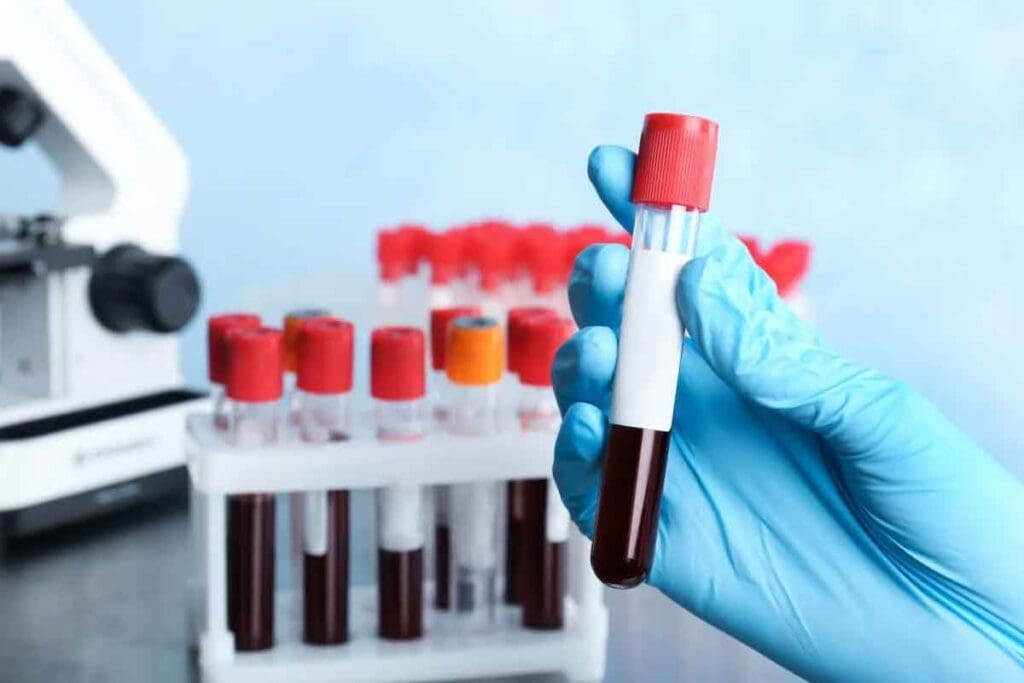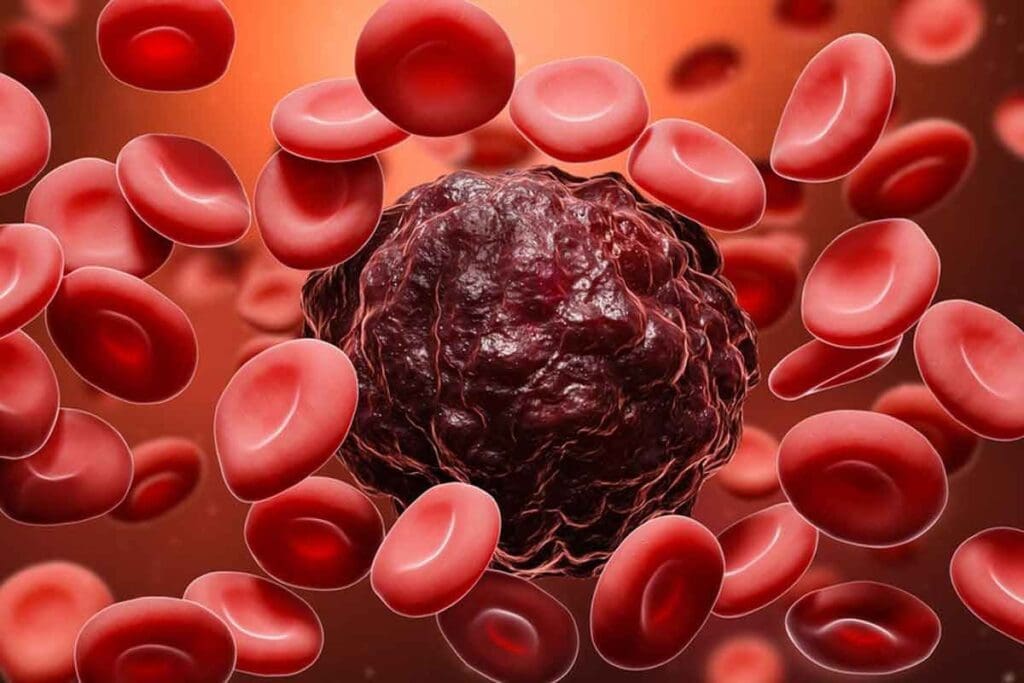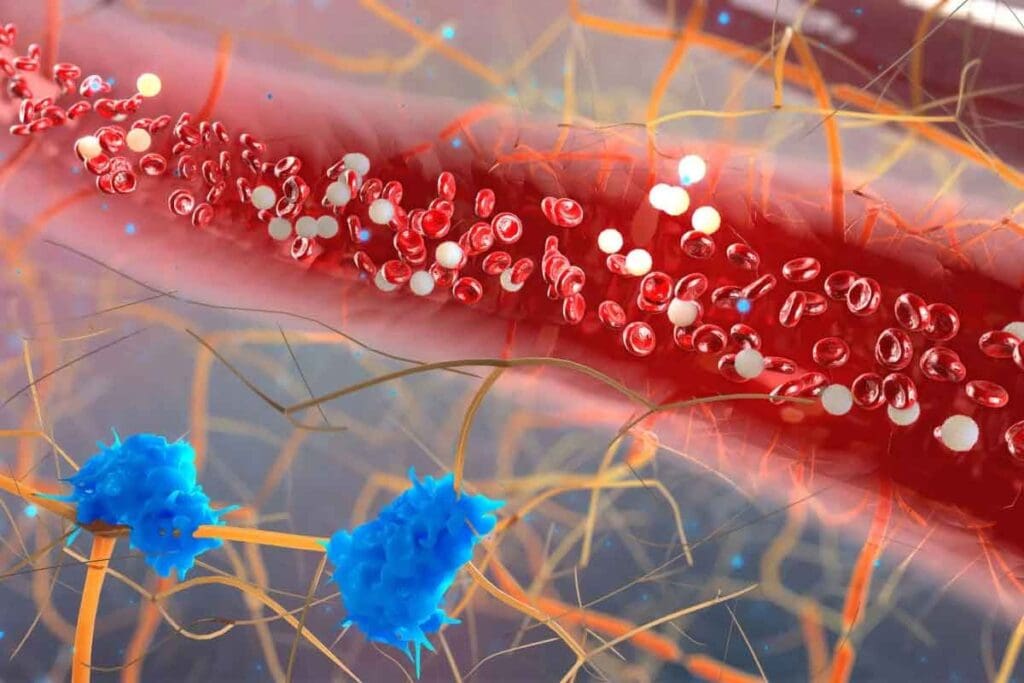Last Updated on November 17, 2025 by Ugurkan Demir

Deadly blood conditions are a big threat to health worldwide. They can strike without warning. These include disorders that affect blood cells and more serious conditions like leukemia and lymphoma.
Liv Hospital is dedicated to top-notch, patient-focused care. It’s vital to know about these serious conditions. Catching them early is key to treating them well.
These conditions affect people everywhere. So, spreading the word and teaching others is important. It helps in the battle against these diseases.

Blood diseases are a big problem worldwide, needing more awareness and action. They affect many people, but some groups are more at risk.
In the United States, over 57,000 people die each year from blood diseases. Blood-borne diseases are a big part of this number. This shows we need more research and health programs.
The death rates from blood diseases change based on the disease, healthcare access, and who you are. For example, some anemias and bleeding disorders have different death rates than cancers like leukemia and lymphoma.
Key Statistics:
It’s important to know who is at risk and why. Things like genetics, environment, and money status affect this.
Some groups face more blood disease problems. People with a family history of certain blood issues are at higher risk. Also, those who can’t get to healthcare early die more often because of it.
Vulnerable populations include:
Knowing who is at risk helps doctors and leaders make better plans. This way, we can fight blood diseases better.

Leukemia is a group of blood cancers that start in the bone marrow. It happens when abnormal white blood cells grow too much. These cells are key to fighting off infections. Leukemia messes up how blood cells are made, causing health problems.
Leukemia is divided into two main types: acute and chronic. Knowing which type you have helps doctors choose the right treatment.
Acute leukemia grows fast and needs quick treatment. It’s marked by lots of immature blood cells that can’t fight off infections well. Chronic leukemia grows more slowly, allowing for a more gradual treatment plan. It’s often found during routine blood tests.
It’s important to know if you have acute or chronic leukemia. Acute leukemia patients usually need strong treatments like chemotherapy and targeted therapy.
Spotting leukemia early is key to better treatment. Signs include feeling very tired, losing weight, getting sick often, and bruising easily. New tests, like genetic testing and bone marrow biopsies, help doctors figure out the exact type of leukemia.
New treatments for leukemia have made things better for patients. Targeted therapies focus on specific problems in the cells. They are often less harsh than old treatments like chemotherapy.
Immunotherapy is also being looked at for leukemia treatment. It uses the body’s immune system to fight cancer. Early results from trials are promising.
| Type of Leukemia | Characteristics | Common Symptoms | Treatment Approaches |
| Acute Leukemia | Rapid progression, immature blood cells | Fatigue, infections, easy bruising | Chemotherapy, targeted therapy |
| Chronic Leukemia | Slow progression, mature but abnormal cells | Often asymptomatic, fatigue, and weight loss | Targeted therapy, watchful waiting |
It’s vital to understand leukemia, its types, and treatment options. Medical research keeps getting better, giving hope to those with this blood cancer.
Lymphoma is a blood cancer that starts in the lymphatic system. This system helps fight off infections and diseases. It happens when lymphocytes, a type of white blood cell, grow out of control.
There are two main types of lymphoma: Hodgkin and non-Hodgkin. Knowing the type is important for treatment and outlook.
Hodgkin lymphoma is known for Reed-Sternberg cells in lymph nodes. It spreads in a certain order. On the other hand, non-Hodgkin lymphoma can start anywhere in the lymphatic system. It’s more common and aggressive.
The main differences are shown in the table below:
| Characteristics | Hodgkin Lymphoma | Non-Hodgkin Lymphoma |
| Presence of Reed-Sternberg Cells | Yes | No |
| Diversity of Subtypes | Less diverse | More diverse |
| Typical Progression | Orderly progression from one lymph node group to the next | Can be more random and widespread |
Doctors use physical exams, imaging tests, and biopsies to diagnose lymphoma. The biopsy is key to figuring out the type and how aggressive it is.
Treatment has gotten better, leading to higher survival rates. Hodgkin lymphoma has a better 5-year survival rate than non-Hodgkin lymphoma. This is because Hodgkin lymphoma is more predictable and responds well to treatment.
Survival rates depend on the stage, type of lymphoma, and overall health. Early diagnosis and treatment can greatly improve chances of survival.
Plasma cell myeloma is a blood cancer where bad plasma cells grow in the bone marrow. This messes up how blood cells are made, causing problems.
Multiple myeloma starts with a bad plasma cell that grows too much. These bad cells fill the bone marrow, stopping normal blood cells from being made.
The disease can grow fast or slow, depending on the person. Things like genetics, age, and health can affect how it grows.
There are many ways to treat multiple myeloma now. Doctors use targeted therapies, immunotherapies, chemo, and stem cell transplants. The right treatment depends on the patient’s health, how far the disease has spread, and the cancer’s genetics.
The prognosis for those with multiple myeloma has gotten better. But most can’t be cured. How well the disease is treated, genetic changes, and when it’s found can affect how long someone lives.
Knowing about multiple myeloma, how it works, and treatment options is key. New research is finding better ways to fight this tough disease, giving hope to patients.
Hemophilia makes it hard for blood to clot, which is very risky. It’s a genetic disorder that stops blood from clotting right. This leads to long-lasting bleeding, causing serious health issues if not treated well.
Hemophilia is complex, with different types and management challenges.
Hemophilia mainly comes in two types: Hemophilia A and Hemophilia B. Hemophilia A is when there’s not enough factor VIII. Hemophilia B occurs when there’s not enough factor IX. Both are linked to the X chromosome, which means mostly males get it.
Because of this, males are more likely to have hemophilia. Females can carry the gene and might pass it to their kids.
People with hemophilia face many problems, like:
But there are new ways to manage hemophilia that have made life better for those affected. These include:
Sickle cell disease is a major inherited blood disorder worldwide. It’s caused by a genetic change that affects how red blood cells are made. These cells can get stuck in small blood vessels, leading to serious health problems.
The disease comes from a mutation in the HBB gene. This gene is important for making hemoglobin, a key part of red blood cells. The mutation leads to hemoglobin S, which causes red blood cells to change shape under low oxygen.
The disease is most common in tropical and subtropical areas. This includes parts of Africa, the Middle East, and India. It’s linked to malaria, as sickle cell trait carriers have an advantage against it. But having two copies of the mutated gene means you can get sickle cell disease.
People with sickle cell disease can have acute crises. These happen when sickled red blood cells block blood vessels. This can cause a lot of pain and affect organs like the spleen, liver, and lungs.
Long-term, sickle cell disease can lead to infections, stroke, and organ damage. Getting regular medical care is key to managing the disease. New treatments like hydroxyurea and blood transfusions have helped improve life for those with sickle cell disease.
Thrombotic disorders are serious conditions where blood clots form in the body. These clots can be deadly if not treated quickly. They happen when blood clots form in veins or arteries, blocking blood flow and causing serious health issues.
Deep Vein Thrombosis is when a blood clot forms in deep veins, usually in the legs. Symptoms include swelling, pain, and redness in the affected limb. If not treated, DVT can lead to pulmonary embolism, a life-threatening condition.
A pulmonary embolism happens when a blood clot breaks loose, travels through the bloodstream, and lodges in the lungs. This blocks blood flow and can be fatal. Symptoms include shortness of breath, chest pain, and coughing up blood.
DIC is a serious condition that involves both clotting and bleeding. It depletes the body of its platelets and clotting factors. It’s often linked to severe conditions like sepsis or trauma. Symptoms range from bleeding gums to severe hemorrhaging.
Severe anemias, not just from iron deficiency, are serious health issues. They can come from genetic problems, bone marrow failure, or long-term diseases.
Aplastic anemia is a rare and dangerous condition. The bone marrow can’t make blood cells. This leads to severe fatigue, infections, and uncontrolled bleeding.
It can happen for no reason or because of toxins, radiation, or some medicines.
Treatment often uses immunosuppressive therapy to calm the immune system’s attack on the bone marrow. Sometimes, a bone marrow transplant is needed.
Hemolytic anemia happens when red blood cells are destroyed too fast. It can be caused by inherited disorders, infections, or medicines. Symptoms include jaundice, fatigue, and shortness of breath.
Managing hemolytic anemia depends on the cause. It might involve corticosteroids to slow down the immune system’s destruction of red blood cells. In severe cases, blood transfusions or surgery to remove the spleen might be needed.
Pernicious anemia is due to a lack of vitamin B12, needed for red blood cells. It often comes from not having enough intrinsic factor, a protein for vitamin B12 absorption. Symptoms include weakness, fatigue, and neurological changes.
Treatment usually means vitamin B12 injections to get around the need for intrinsic factor. Early treatment can greatly improve life quality for those affected.
Recent years have brought big changes in treating fatal blood diseases. This gives new hope to patients and their families. New therapies and medicines have been developed, helping with conditions like leukemia, lymphoma, and hemophilia.
Targeted therapies and immunotherapies have changed how we treat blood diseases. For example, CAR-T cell therapy is very effective against some types of leukemia and lymphoma. Gene therapy also looks promising for inherited blood disorders, like sickle cell disease and hemophilia.
These new treatments have made a big difference in patient outcomes and quality of life. As research keeps moving forward, we can expect even better treatments for fatal blood diseases. The future of hematology looks bright, with new studies and trials leading to more innovative treatments.
Deadly blood diseases include leukemia, lymphoma, and multiple myeloma. Hemophilia, sickle cell disease, and thrombotic disorders are also common. Severe anemias like aplastic anemia and hemolytic anemia are also serious.
Acute leukemia grows fast and needs quick treatment. Chronic leukemia grows slower and might not need immediate treatment.
Signs of lymphoma include swollen lymph nodes and fever. Night sweats, weight loss, and fatigue are also common.
Doctors use blood tests, bone marrow biopsies, and imaging studies to diagnose multiple myeloma. X-rays, CT scans, and MRI scans are used.
Hemophilia can cause frequent bleeding and joint damage. It also raises the risk of infections and bleeding complications.
Sickle cell disease is a genetic disorder that affects hemoglobin. It makes red blood cells misshapen and break down. It’s inherited in an autosomal recessive pattern, needing two abnormal genes.
Thrombotic disorders, like deep vein thrombosis, occur when blood clots form. Symptoms include pain, swelling, and shortness of breath.
Aplastic anemia is when the bone marrow doesn’t make enough blood cells. Treatment includes immunosuppressive therapy, bone marrow transplantation, and supportive care.
New treatments include targeted therapies, immunotherapies, and gene therapies. Bone marrow transplantation and supportive care have also improved.
Blood cell disorders, like anemia and leukemia, affect blood cell production or function. Treatment varies by disorder and may include medications, transfusions, and supportive therapies.
Subscribe to our e-newsletter to stay informed about the latest innovations in the world of health and exclusive offers!